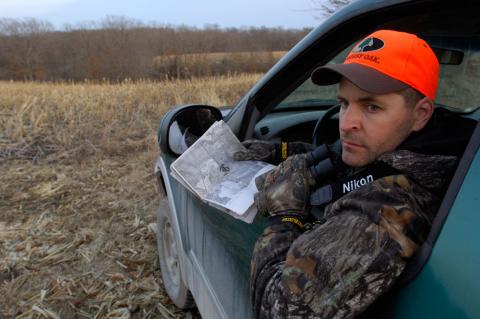Heath Wood
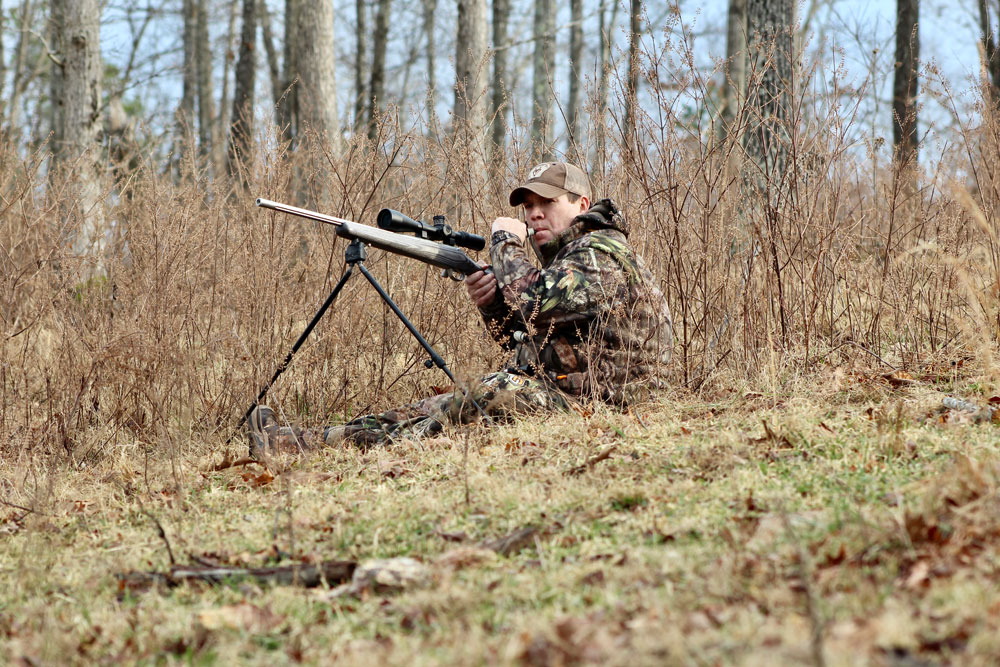
An older man once shared that the only sport you could play and fail at 60% of the time, yet still be a star athlete, was baseball. The gentleman would say, “a baseball player who has a batting average of 400 is a star player.” That means that the batter fails to get a hit 60% of the time yet is considered successful.
Being an avid coyote hunter for several years makes me think that this man had never been around a predator hunter before. He would have indeed concluded that two sports can be performed at a high fail rate yet still successful. One being baseball, the other being coyote hunting. Although we wish every stand were a success, if we call four out of 10 stands, that is still considered a winning average. Being a “good” predator hunter doesn’t mean that he or she is successful at calling a coyote in on every calling stand that they make. The key to being a successful coyote hunter is to spend time in the field, making several attempts at calling a coyote into shooting range. When it doesn’t go the way you want, do not get discouraged; instead, keep hunting.
The object of making several stands is to learn from them and move forward. There are 3 tactics that if coyote hunters take advantage of, they can increase their batting average, elevating their game as a good predator hunter.
Make Quality Stands
The first tactic to becoming a better predator caller is to make quality stands when calling. One of the biggest mistakes found from predator hunters questioning why they are not calling in coyotes is usually traced back to making poor calling stands.
A less than ideal calling stand can mean the wrong wind direction, sitting in the wrong location to see, or merely calling in an area with no coyotes and sitting in the wrong location or hunting where coyote populations are low falls back on lack of scouting.
Checking the area where you will be hunting several days before calling is a must. One must look for signs such as tracks or droppings, locate coyotes by howling days prior, or physically seeing coyotes are all ways to assure that there are coyotes in the area. One of the biggest mistakes callers make is going into an area and calling because it merely looks like a good place. In my opinion, this mistake happens to veteran hunters as much as beginners. Hunters who have hunted for several years become familiar with areas where they have had success. That doesn’t work in the game of calling coyotes. You must know 100% that there are coyotes in the area, have an excellent place to sit to make a shot, and have the wind in your favor. That is the definition of making a quality stand. If conditions are less than ideal, DO NOT CALL THERE!
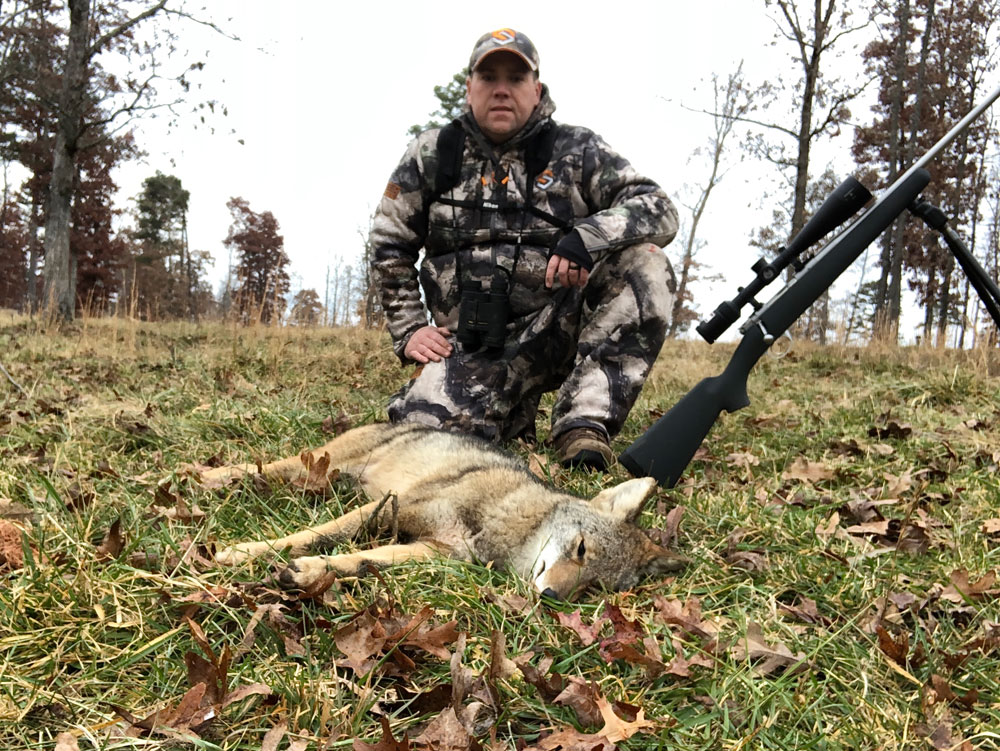
Calling Sequence
I have written many articles discussing when I felt like my calling game began to rise when I began incorporating coyote vocals into many of my calling sequences. Choosing the proper sounds for a calling sequence must be centered around adding realism/naturalism and creating urgency.
The words realism and naturalism can have the same meanings when referred to for calling coyotes. They mean to use calls that produce a quality sound. I use diaphragm calls, open and closed reed hand calls, and electronic calls when attempting to lure in a coyote. With all types of calls, it is beneficial to have a call that produces an authentic sound. I use FoxPro or MFK Game Calls diaphragm calls. Both produce real coyote vocals such as howls, yips, whines, and pup in distress. I have used several different brands of open reed howlers and closed reed distress callers with hand calls. As with most hand calls, it is up to what you feel the most confident with when using. As for electronic calls, I use the FoxPro XWave caller. The XWave has great quality speakers that produce a clear sound that makes producing a more realistic sound possible.
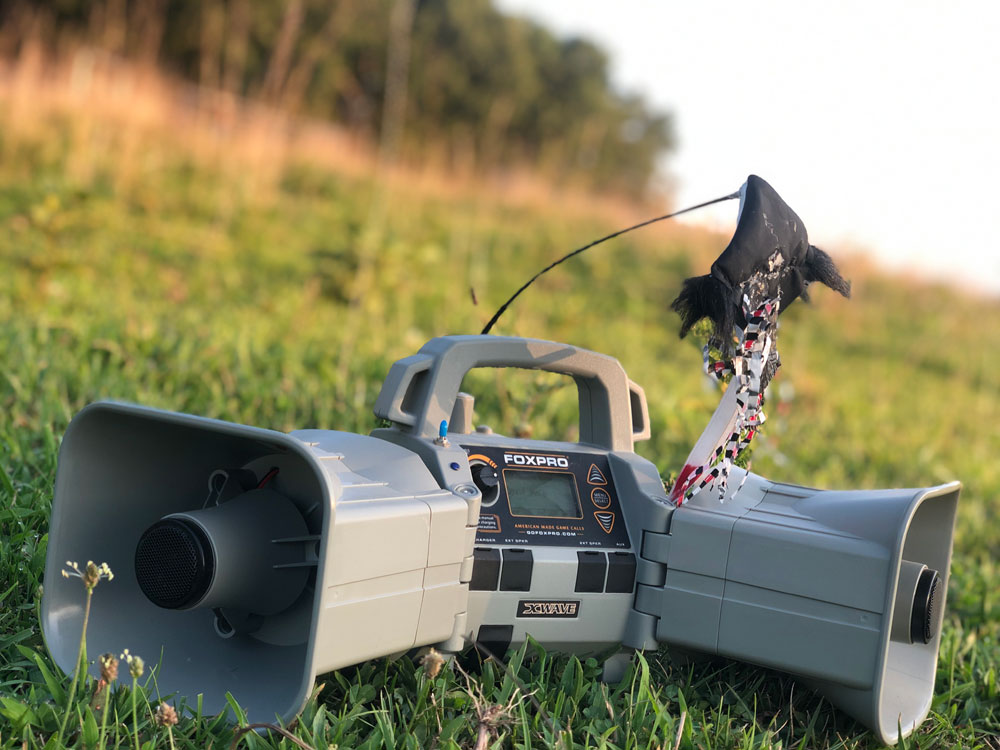
When using coyote vocals in your calling sequence, I think the best overall sound to use is coyote howls at the beginning of a sequence. And this is where naturalism combines with realism. Realism is how the sound is created. Naturalism is when and why the sound is made. Using a few coyote howls at the beginning of a sequence starts to paint a picture in a coyote's head. When a coyote hears another coyote, they immediately know that there is another coyote in the area. If a food source sound is played after the howling, the coyote fears competition of food and has an urgency to get to the sound first, resulting in quicker response. If a coyote is in a breeding phase, hearing another coyote howl could mean a mate or create tension among an already territorial animal, making them respond quickly to see who is invading their area.
Adding coyote vocals can be done throughout the entire calling sequence. Adding sounds such as a challenge howl can also spark coyotes' territorial instinct, making them curious to see who is making the sound. Other vocals that can be used are breeding sounds such as whimpers and whines. These sounds also create an urgency to investigate quickly.
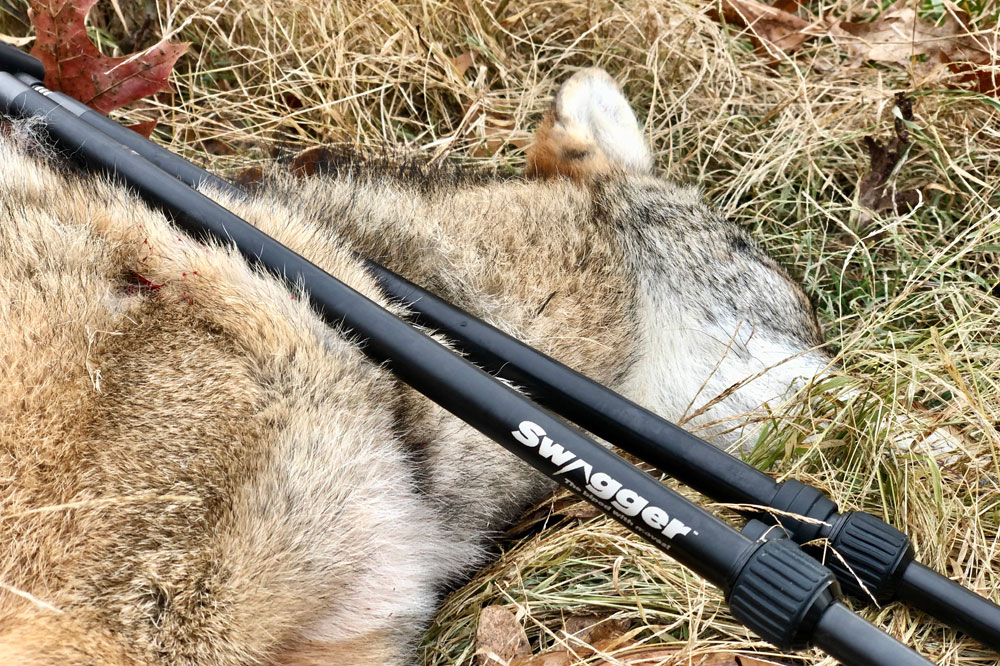
Marksmanship
The last skill that will elevate your game as a hunter is capitalizing on every opportunity to harvest a coyote. If one has coyote hunted for any period, they know that making the harvest is necessary when the chance arises. There is nothing worse than doing all your homework, making a good stand, and choosing the right calls only to end the stand with a miss, or a coyote running off with no shot attempt at all.
Instead, one must know what his or her firearm will do at 50 yards out to long distances such as 500 yards. Then they must be able to shoot a coyote standing or leading the shot while running. To do this, you need to spend time on the range when not hunting to get familiar with every square inch of your weapon.
On 99 percent of my hunts, I use Swagger Bipods. I have the ability to have a solid rest while keeping the mobility to be able to make the shot in every shooting position. For the last couple of years, I have become an enormous fan of Swaggers Stalker QD42 bipods. They are lightweight, can be taken on and off the rifle when not in shooting position with a quick connect feature, and they have Swaggers Flex Ready Technology legs that can move and adjust to any shooting situation. Having the ability to have a steady rest when the shot opportunity arises is crucial.
When making a coyote stand, my mind frame is that if I can visually see a coyote, I want to be able to do everything in my power to make a shot. Being able to close the deal with a shot no matter what it takes is a great way to increase your average ability to harvest coyotes more often and could very well help you achieve superstar status.
















